Have you ever heard of the Gole dell’Alcantara/Alcantara Gorge? In this guide, we’ll take you to discover this geological wonder in Sicily!
Don’t have time to read? Book your Alcantara Gorge tour here!
- From Taormina: Full-Day Etna, Wine & Alcantara Canyons Tour – the gorge and Etna plus wine!
- Alcantara River: Body Rafting & ‘Pasta Alla Norma’ Lunch – taste Sicily’s most beloved pasta dish
- Sicily: Mt. Etna, Wine and Alcantara Tour – the perfect ingredients for a fun day out
- From Catania: Mount Etna and Alcantara River Tour – wonderful tour from Catania
- From Taormina: Mount Etna and Alcantara River Tour – perfect to escape the Taormina heat and crowds!
If you’ve been to Sicily, you’ll know that Mount Etna dominates the island on so many levels. As Sicily’s highest peak, it can be seen from pretty much anywhere (on clear days), and as one of Europe’s most active volcanoes, its eruptions can truly affect life on the island, as well as transports to and from.
The eruptions of Mount Etna have also shaped the island’s past, creating some true geological marvels. One of the best known is the Gole dell’Alcantara/Alcantara Gorge, a basalt canyon in the vicinity of Etna, easy to reach from Catania, Taormina, and many small villages in Sicily like Castiglione di Sicilia.
In this article, we’d like to provide a comprehensive guide to the Alcantara Gorge, including how to get there, what to do, and some tips that will help you save money and enjoy your visit!
Keep reading and don’t forget to add the Gorge to your Sicily itinerary!
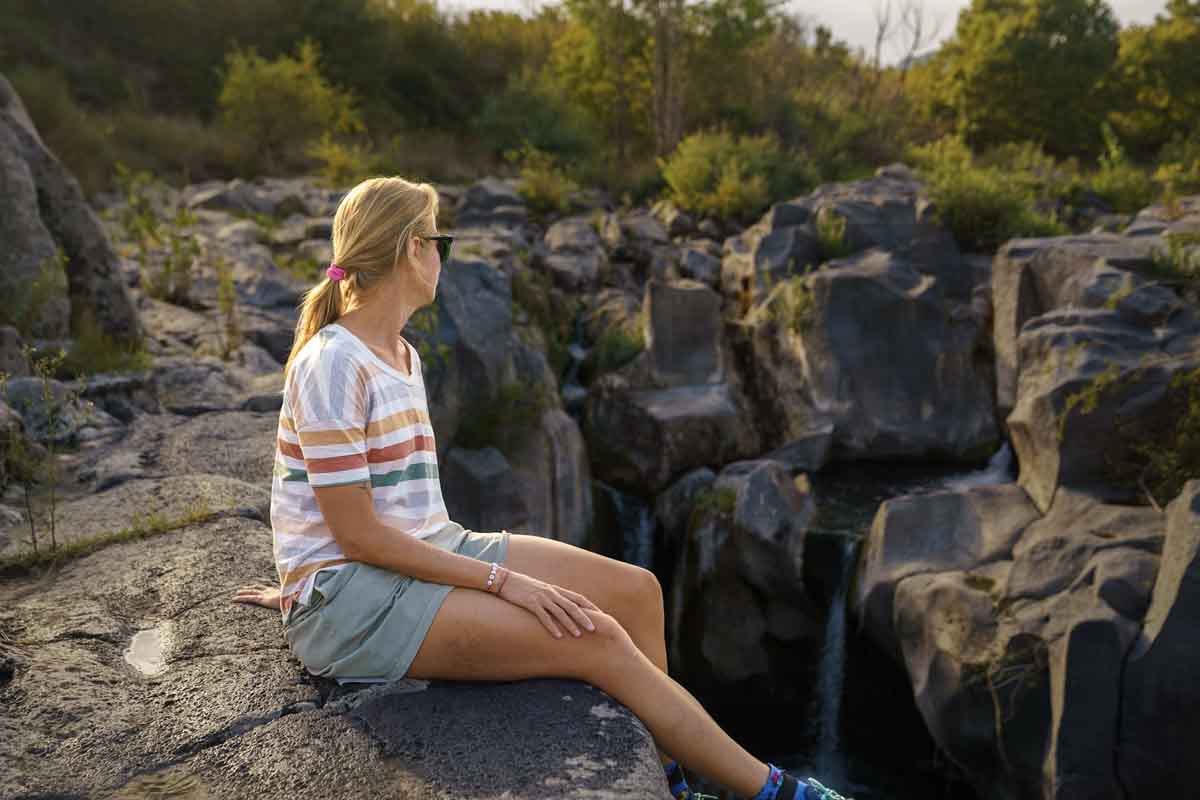
What is the Alcantara Gorge
The Alcantara Gorge is a spectacular canyon bordered by 50-meter-high basalt walls, formed by the Alcantara River and by lava flows from Etna. The Alcantara River runs for 53 km from the Nebrodi Mountains to the Ionian Sea, near Messina. It’s one of the few rivers in Sicily to run year-round, fed with icy snowmelt from Etna and the Nebrodi, rushing powerfully until the coast. The name Alcantara derives from the Arabic Al-Qantarah, meaning bridge, referring to an ancient Roman bridge.
The towering basalt columns of the Alcantara Gorge result from a series of eruptions, dating back to approximately 8000 years ago. Lava flow from these eruptions partially blocked the river, but the cold temperature cooled the lava quickly, and the fast-flowing waters forced a way through over thousands of years, creating the scenic canyon we see today.
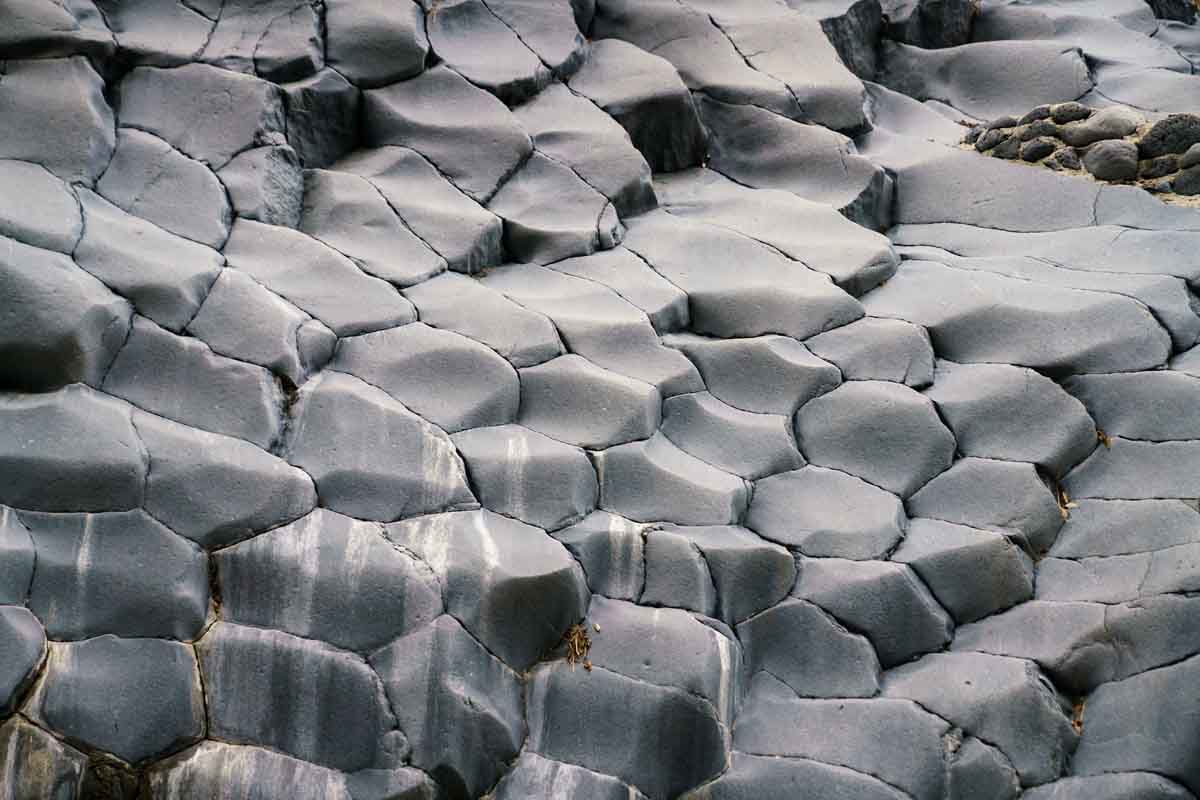
Where is the Alcantara Gorge
The Alcantara Gorge is roughly between Catania and Messina, about 50 km from each of the two towns, and only 20 km inland from Taormina, making it a popular excursion from the coastal town. Let’s see how to get there from Taormina, Messina, and Catania.
-Getting to Alcantara Gorge from Taormina
By car, it’s very easy to reach the Gole dell’Alcantara from Taormina – just drive to Giardini Naxos and then inland for about 20 km along SS185. Travel time should be about half an hour, but the road is very busy in summer and it may take an hour or even more.
In summer, there are three daily buses between Taormina and the Alcantara Gorge with the Interbus bus company, and tickets are €3. Visit their site for info and timetables.
-Getting there from Catania
Drive along the A18 towards Messina until the Giardini Naxos exit, and then take the SS185 in direction Francavilla di Sicilia, until you reach the entrance. Travel time should be about 1 hour – but it can be double in summer.
To travel by public transport, you should either make your way to Giardini Naxos by bus or Taormina by train, where you can get on one of the three daily buses to the Alcantara Gorge.
Getting there from Messina
From Messina, drive along the A18 following directions for Catania until you get to the Giardini Naxos exit, then follow the instructions above. Travel time should also be about an hour, longer in summer.
Do you have more time? Here’s our ideal 2 weeks Sicily itinerary!
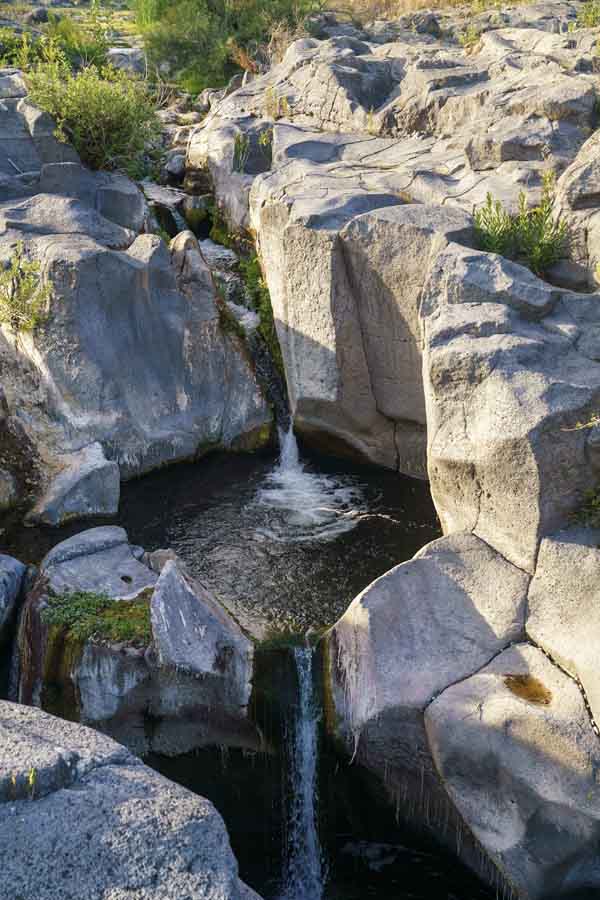
Best Time to Visit the Alcantara Gorge
The main activity at the Alcantara Gorge is hiking a few hundred meters through the river, which will mean you’ll get your feet and up to your thighs wet. The water temperature is about 8/10°C – wonderful in summer, when the temperature is absolutely scorching, very chilly in winter.
Summer is very busy at the Alcantara Gorge, with scores of tourists visiting on day trips from Taormina or Catania, escaping the heat with a dip in the chilly waters. Avoid visiting in July and (especially) August, when crowds and long queues will likely ruin your experience of this beautiful place.
September/October and April/May/early June are much better times to visit. The outside temperature is warm enough for you to brave the chilly water without suffering, and the crowds are gone. We visited in late September, and shared the place with a dozen or so people.
In winter, there’s hardly anyone visiting, but hiking through the river may get uncomfortable.
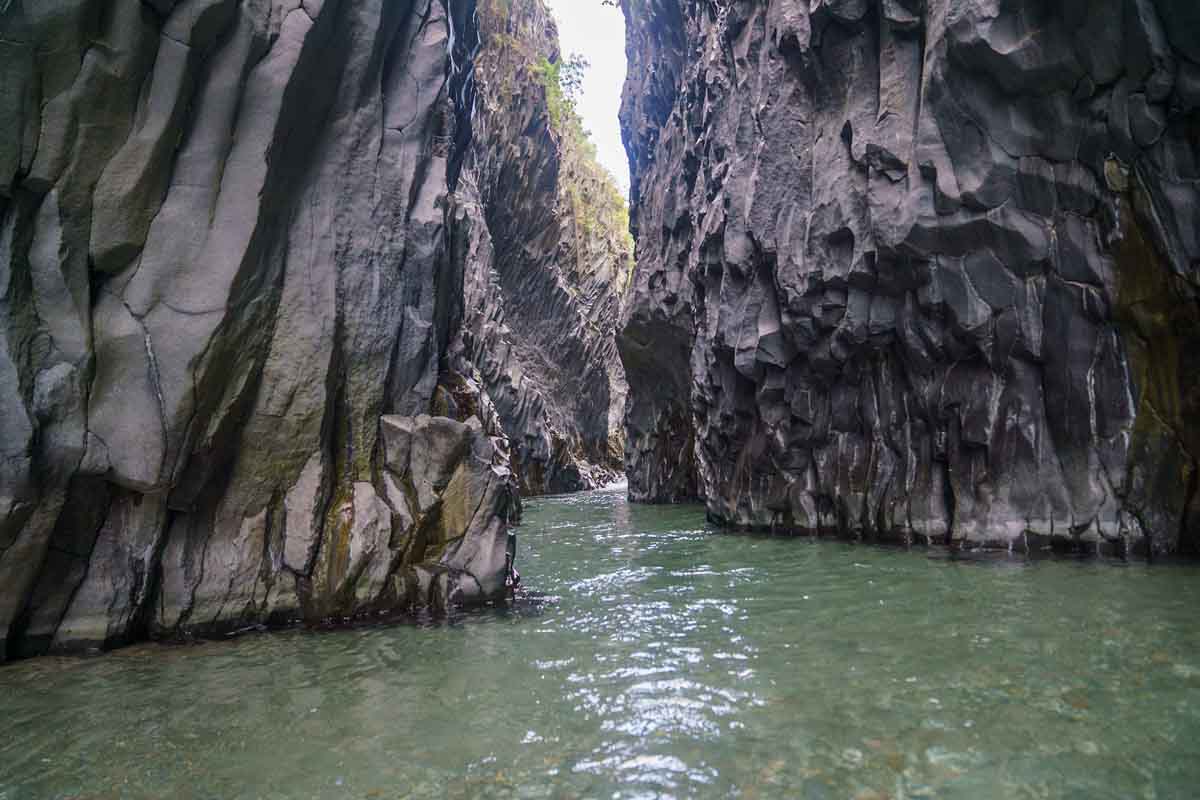
What to Take on Your Visit
Since you’ll be hiking through the river, don’t forget water shoes. You can also rent them at the kiosk on the beach down the staircase from the public entrance. To be honest, I forgot them and hiked barefoot so it is indeed possible, but it’s not comfortable as it’s full of gravel and pebbles.
You’ll get wet up to your knees/ankles, so bring shorts or a swimsuit – after a while, you’ll get used to the water temperature so you may even attempt a little dip, especially if it’s a hot day. A change of clothes will also be helpful in case you get wet!
Also bring some water and food/snacks, there’s only one kiosk with drinks and snacks, and it’s pricey.
Some sunscreen and bug spray will also be useful if you’re visiting in summer.
Alcantara Gorge Entrance Fee
There are two entrances to the Gole dell’ Alcantara/Alcantara Gorge – the public entrance, marked on Google Maps as Gole dell’Alcantara-Ingresso Comunale, and the Gole Alcantara Parco Botanico e Biologico, the main/private entrance that most people use.
Entrance fees are very different – it only costs €1.50 to access the Gorge from the public entrance (Gole dell’Alcantara-Ingresso Comunale), following a long flight of steps.
The other entrance, the one marked as Gole Alcantara Parco Botanico e Biologico, is privately owned and a lot more expensive, costing €13 in high season, €10 in shoulder season, and €7 in low season. This ticket includes a lift down to the riverside and then up again, so it’s worth considering if you are visiting with young kids or have mobility problems.
Besides the benefit of being closest to the largest parking lot and the chance to get the lift, it makes absolutely no sense to pay extra for the private entrance. Head to the Ingresso Comunale and save some cash – the stretch of gorge you visit is exactly the same from both entrances!

Things to Do at the Alcantara Gorge
-Hiking
The most spectacular section of the Alcantara Gorge is just a few hundred meters from the beach you get to after following the stairs down from the public entrance. You can easily hike there independently – just get into the river and walk upstream, heading right from the entrance.
The section of the gorges with towering basalt walls is only about 200 meters away. The water will feel freezing at first, but you’ll soon get used to it. Water shoes are helpful, but if you are just planning to hike a short distance, you don’t need big rubber boots or other specialist equipment. The distance you can hike safely depends on rainfall – it can be just a few hundred meters more, or longer.
We hiked in late September, and we could walk approximately 400 meters from the beach before the water level got too high.
If you enter the gorges through the private entrance, you can follow three separate hiking trails: Sentiero Eleonora, taking you through a park and then down to the riverside; Sentiero del Giardino Mediterraneo, through a botanical garden with Mediterranean plant species; and Sentiero delle Gole Alcantara, with fantastic views of the gorges from the top.
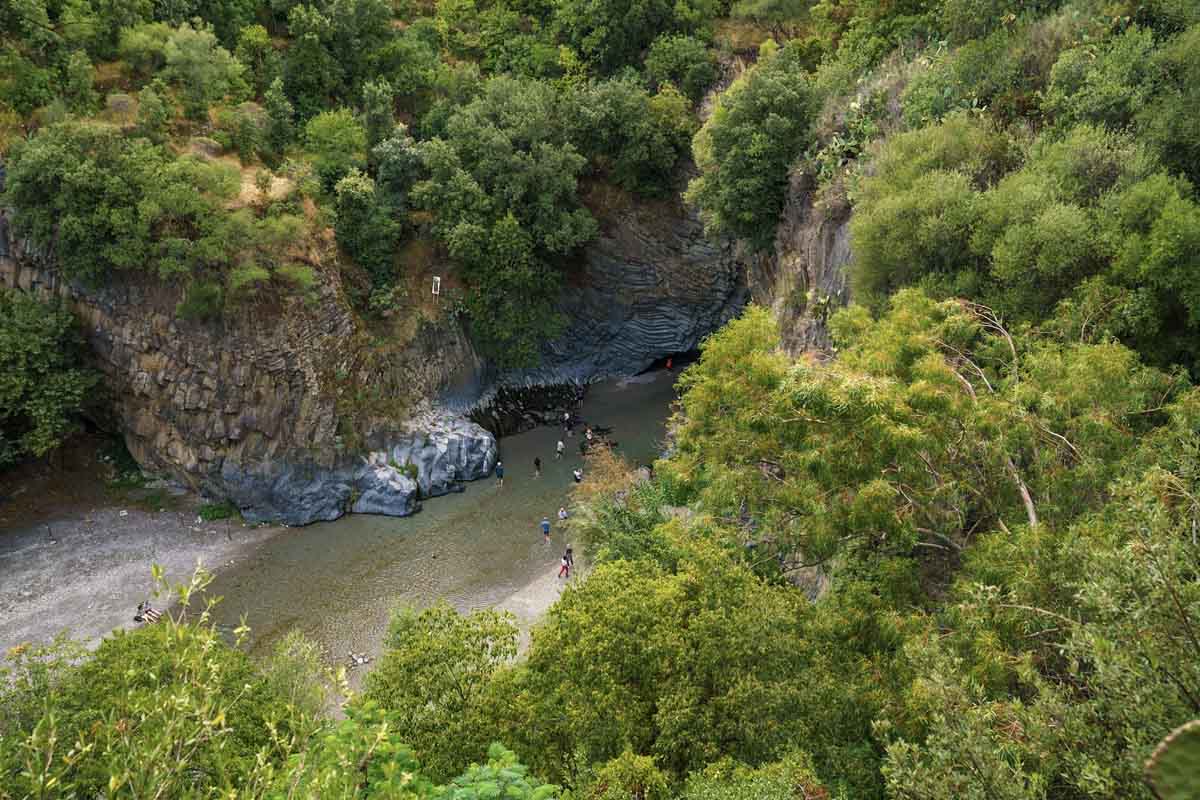
-Swimming
If you are brave enough, or it’s really hot and want to cool down, you can go for a swim from the beach you access from the public entrance. Remember the water is about 8/10°C even in high summer, so your dip will more than likely be a short one!
The downside is that the beach close to the public entrance is super super busy in summer. If that is the only time you can visit, we recommend opting for river trekking or body rafting, both of which also include time for swimming.
-Body Rafting
Are you planning to visit the Alcantara Gorges in summer and want to get away from the crowds? The easiest way is going body rafting, taking you upriver for about 1.5 km through gorges, waterfalls, and pools where you can swim and splash around whilst admiring the cliffs.
You’ll need to join a guided body rafting excursion, including equipment (vest, helmet, water shoes and wetsuit) and a guide taking you to a remote section of the gorges, with lots of natural slides and no other tourists. The experience lasts approximately 1 hour and a half.
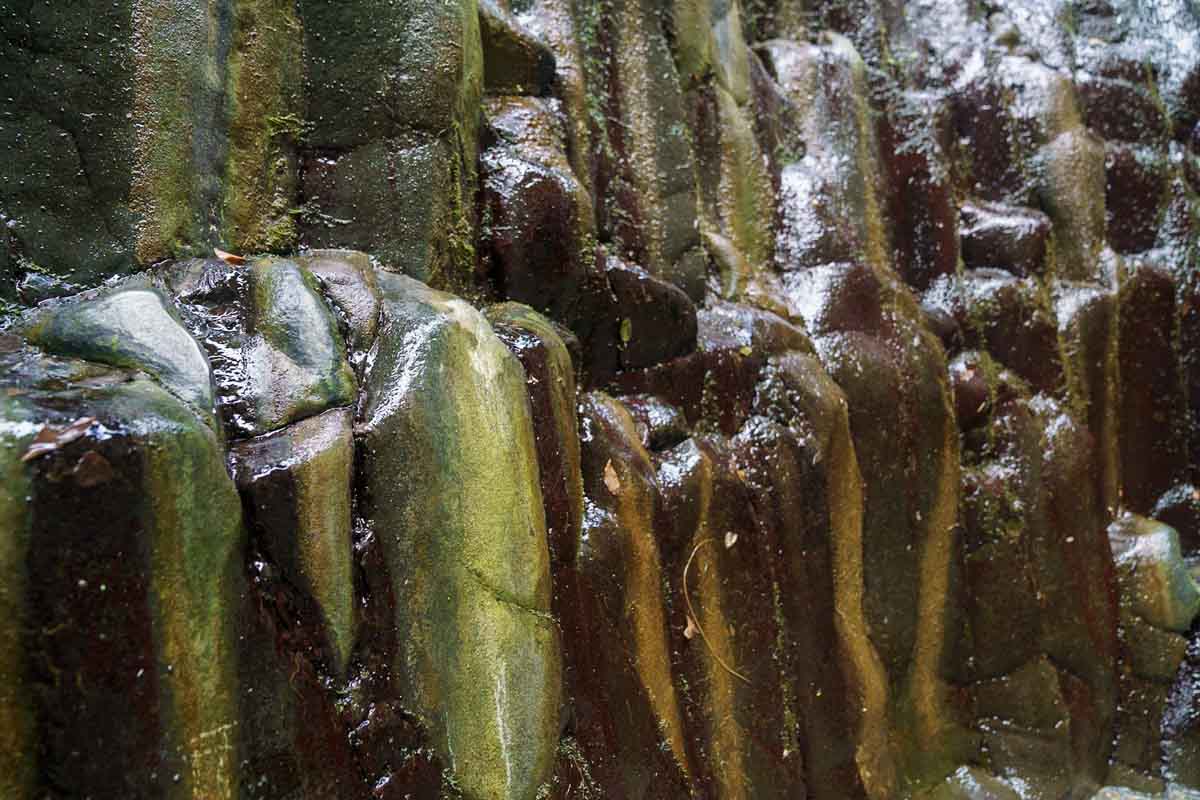
-River Trekking
Do you like the sound of body rafting, but fancy something a little more intense? Then river trekking is for you. The itinerary is about 3/4 km long, and takes you upstream via rapids, waterfalls and stretches where you’ll be walking against the current. Most tours last about 2 hours, and you’ll get to admire stretches of the gorges that can’t be accessed in other ways.
The difference is that body rafting is more about swimming and splashing around, whereas during a river trekking experience you’ll be hiking more and covering more ground – but there’s still time for swimming!
-Canyoning
Ok, so adrenaline is what you’re after? Then canyoning at the Alcantara Gorge is the activity for you. In contrast with the two above-mentioned activities, canyoning makes use of ropes and other aids to follow the course of the river. You’ll have to climb, rappel and jump into water pools, always accompanied by guides of course.
Canyoning at Gole dell’Alcantara is generally a half-day activity, and all equipment is included.
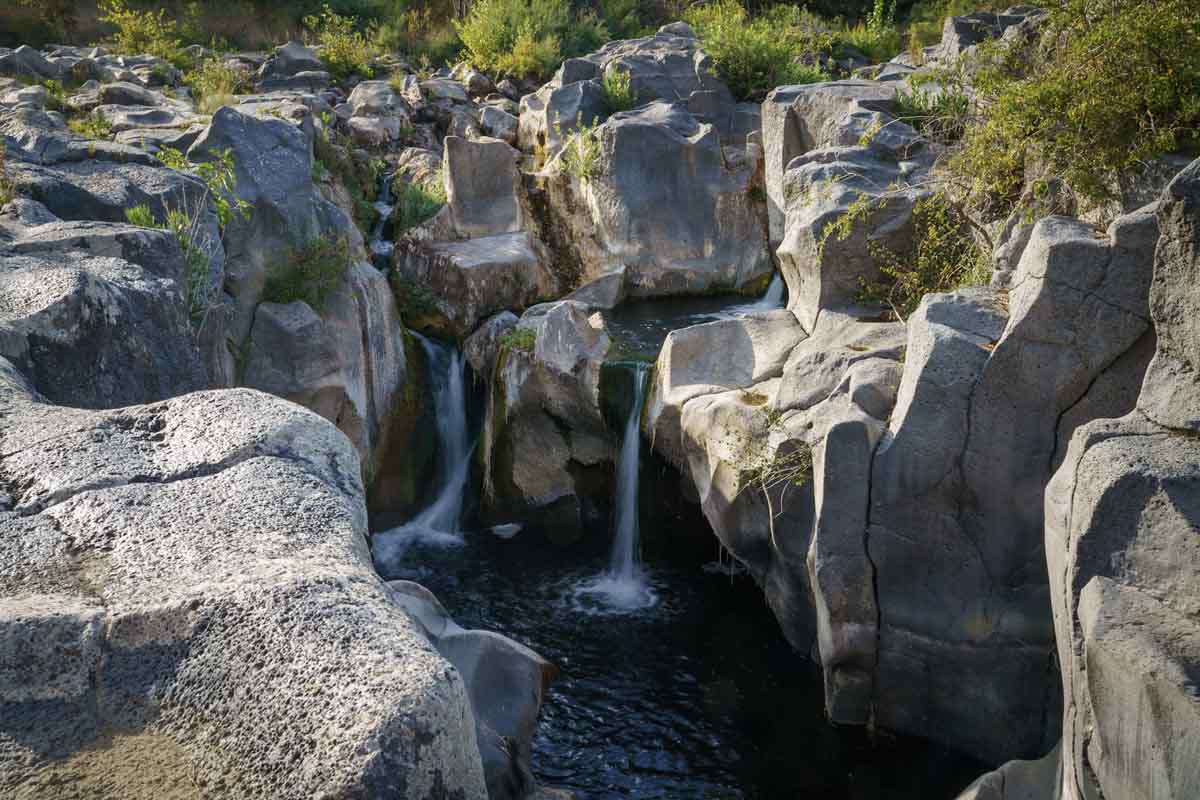
-Visit Piccole Gole
This is a separate itinerary that doesn’t require you to enter the Gole dell’Alcantara from one of the two entrances. The Piccole Gole is a separate stretch of the Alcantara River, with the same basalt cliffs but much smaller – about 5/10 meters high. The easiest viewpoint is from the top, so you’ll also get a different perspective.
The Piccole Gole are located in near the Cuba di Santa Domenica, a spectacular Byzantine church dating back to the 7th century AD. You can drive to the Cuba and walk to the Piccole Gole in about 5 minutes – you can read more about it in the Castiglione di Sicilia paragraph of this best villages in Sicily article.
Alternatively, you can park your car at Ponte San Nicola and hike about 2 km to the Piccole Gole, following a scenic stretch of the river with pools, small waterfalls and basalt formations. The location is NOT marked on Google Maps, so ask locals before you set off!
-Visit Gurne dell’Alcantara
The Gurne dell’Alcantara are a series of small lakes near Francavilla di Sicilia. The location is marked on Google Maps, but don’t try driving there – you’ll get stuck between impossibly small country roads.
It’s much better to walk, following the itinerary from the centre of Francavilla, from the car park in Via San Francesco. The trail is easy to follow, it’s about 1 km and a half each way to get to the gurne, visiting some interesting sites along the way.
You’ll see the ruins of Francavilla castle, the saje, an irrigation system set up by the Arabs, and a water mill that was also one of the first places in Italy where tests were carried out for the production of hydroelectric energy at the end of the 19th century.

